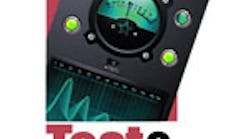An international research team has successfully developed technology that’s able to control and measure spin current in the same way as electrical current. The team of physicists hails from the Hitachi Cambridge Laboratory of Hitachi Europe, the University of Cambridge and the University of Nottingham in the U.K., the Institute of Physics of the Academy of Sciences and Charles University of the Czech Republic, and the Texas A&M University in the U.S.
Electronic devices involving information processing, semiconductors, storage, and power have been influential forces behind the advances shaping industry, social infrastructure, lifestyle, and science in the 20th century. They’re generally based on detecting the basic attribute of the “charge” of an electron.
This latest technical development is a novel concept founded on the second basic attribute of an electron—the elementary magnetic moment, or the so-called “spin.” It’s opening the door to the era of “spintronics.”
Sixty years after William Shockley’s development of the transistor in 1948, solid-state electronic devices have operated via physical principles to electrically manipulate and measure the charge of electrons. Now, expectations are high that spintronics technology could open the door to new low-power consuming electronics, hybrid electric-magnetic systems, and completely new functionalities.
The idea of electrically controlling and measuring the spin of an electron was first considered some 20 years ago with regards to spin-transistors. However, many fundamental and critical issues in spintronics, such as spin-injection, generation of pure spin-current, spin-manipulation, and spin observation, needed to be achieved before any kind of verification was possible. Until now, no experiments have been performed to manipulate spin current in the same way as electrical current or the measurement thereof.
In 2005, the international research team and Hitachi were able to measure, separately, an up and down spin 1 (spin Hall effect 2) at a temperature of 269°C in a gallium-arsenide semiconductor. Then in 2009, using the same gallium-arsenide semiconductor at a temperature of -53°C, they measured the flow of spin-polarized current over a distance of a few microns (Spin-injection Hall effect 3).
In the current development, the up or down spin was controlled by a gate voltage, and the ON/OFF operation as a transistor was verified. Here, a circularly polarized light 4 was used to generate pure spin current in the semiconductor.
However, when spin-injection technology for ferromagnetic material is developed, the all-solid spintronics device—proposed as a theory by Supriyp Datta & Biswajit A. Das in 1990—will ultimately be achieved.
Furthermore, in realizing a solid device that’s able to control and detect the polarization of the light, a new dimension of light polarization can be employed as information in future optical communication, opening the way for even larger capacity information transmission systems. It could also find homes in new analytical systems, in which the polarization of light could be used to study the characteristics of biological or molecular material.
Continue on next page
The Spin Hall-Effect transistor
This transistor consists of a planar photodiode with a pn-junction 5 diode and an n-type channel that forms the hole bar. By shining light on the diode, photo-excited electrons 6 generated by the photovoltaic effect are injected into the device. The degree of circular polarization of the incident light generates the spin-polarized electrons. The injected spin precedes as a spin-current (spin-injection Hall effect).
At this point, if a p-type electrode is formed above the n-type channel and a voltage is applied, according to quantum relativistic effects 7, the precession of the spins are controlled by the input gate-electrode voltages. These effects are also responsible for the onset of transverse electrical voltages in the device that represent the output signal, depending on the local orientation of electron spins.
Notes:
1. Up and down spin: Apart from electronic charge, an electron has an attribute of the elementary magnetic moment, or “spin.” Spin has two directions, up or down.
2. Spin Hall effect: This refers to the phenomenon that up and down spins are separately accumulated along the edges of an electric current, when electrons flow through material with spin-orbit interaction. The spin Hall effect was independently observed for the first time in 2004 by the Hitachi Cambridge international research team and a research team at the University of California, San Diego, Calif.
3. Spin injection Hall effect: This method uses the spin Hall effect to detect up and down spins that are excited in semiconductor material by left or right polarized light.
4. Polarization of light: Light is an electromagnetic wave that propagates in space. The polarization of light is the orientation of an electromagnetic wave’s oscillations in the plane perpendicular to a transverse wave's direction of travel. In this experiment, circular-polarized light was used. Circular-polarized light propagates as the orientation of oscillations rotates. Circular polarization light is either “right” or “left”; they have a different rotation direction of the vector orientation of electromagnetic wave’s oscillation.
5. pn junction: Charge current is generated by the movement of electrons or holes. In a p-type semiconductor, the hole is the carrier that transports electric charge. In an n-type semiconductor, the electron is the carrier. A pn junction is a region in which the p-type and n-type semiconductors are connected.
6. Photovoltaic effect: This is the phenomenon where light illumination to a pn junction generates electric current.
7. Quantum-relativistic effects: This refers to the spin-orbit interaction. In a material with spin orbit interaction (although said material is not subject to a magnetic field), electrons that move perpendicular to the electric field appear to also be influenced by a magnetic field. This affects the spin, and depending on the spin’s orientation, it deflects the direction of electron orbit.
